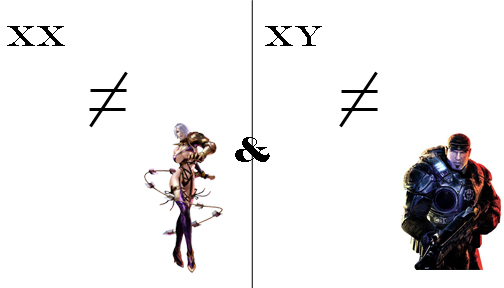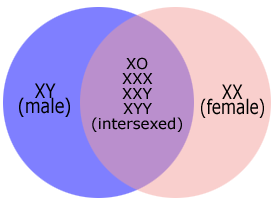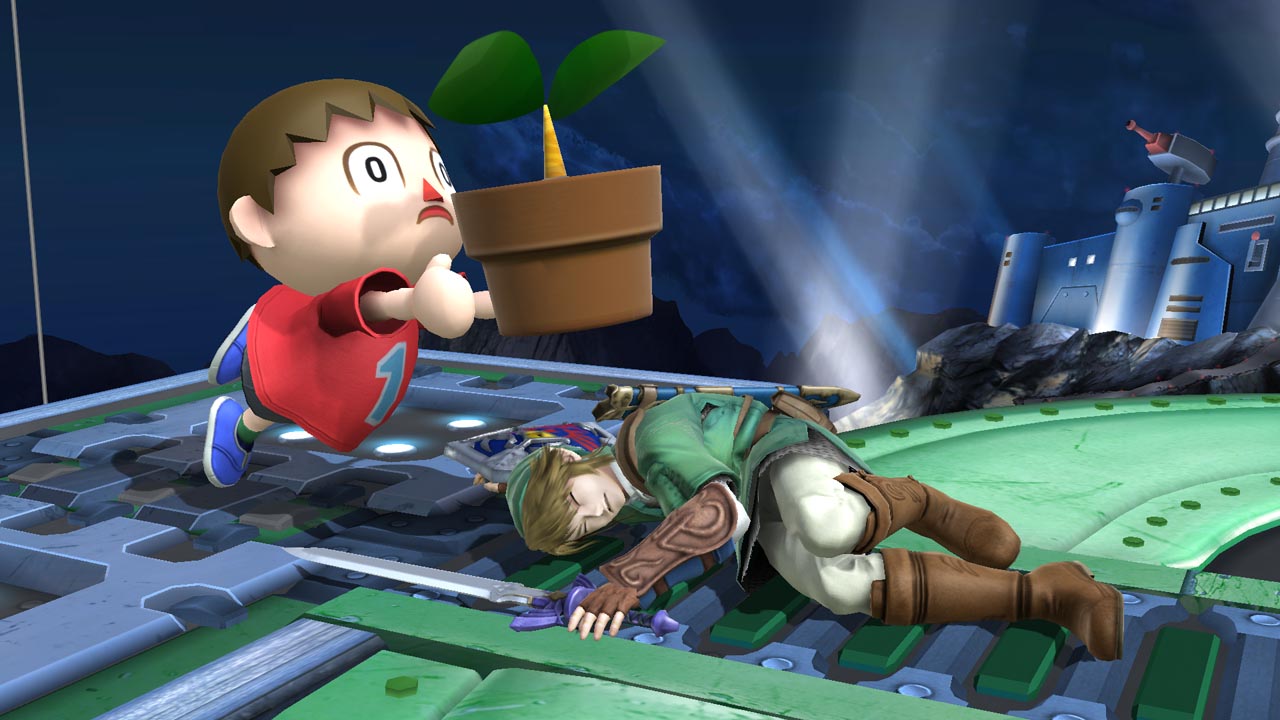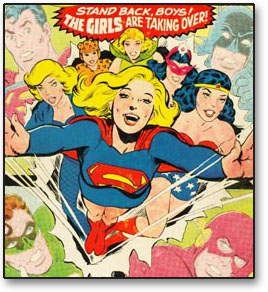In this week’s podcast, Alex brought up the fact that she was reading Judith Butler’s gender performativity theory and I thought that while Butler’s work is a little heavy it could definitely lead us to a good discussion of how feminine and masculine characters in video games are constructed aesthetically and narratively.
Here’s the deal. Gender is a social construct. We all know it regardless of whether or not we want to believe it. We are born a particular sex (male, remale, intersexed), but there is no one gender that just comes along with that sex. And there really is no set definition of gender. It’s all shades of grey. All feminine folks aren’t just “sugar and spice and everything nice” and all masculine folks aren’t “snips and snails and puppy dogs’ tails”. We can all be a little bit of this and a little bit of that (and some of us are more of one than the other and just a bit less than traditional) and the kicker is, it’s all a performance. And not a one night gig, but something that takes place so many times that it becomes naturalized (not natural, but naturalized) and gets seen as being the norm.
Video games take gender performativity to a whole new level. Not only is the masculine the primary and naturalize gender in terms of video game characteristics, but they serve as a foil for female characters. Female characters are everything that the men are not and they become the objects upon which male characters act in order to prove that they are indeed “men”. As feminists who talk about video games we often get a bad wrap. We get accused of ignoring men in games, solely focusing on the female aesthetic in games, making issues where none exist, and even of hating games.
NEWSFLASH: We do not hate games, gamers, or men. We do focus on women and minorities in games because that is where our interest lies and because that is the largely unexplored frontier. Having to deal with the why question is much like having to answer why African American/Queer/Women’s Studies exists…it’s because it has to. It is not represented by the dominant paradigm and it is the thing that fills the void. It is a necessary.
So to break it down for the theoretically uninitiated:

and moreover:
does exist. And video game characters and narratives need to take a bit of this into consideration. In the meantime podcasts and blogs like ours definitely will and we will continue to expect that game developers will take it into consideration as well.
So, in the future you can expect that I will continue to talk about gender representations in games and game narratives, but that I’m going to primarily focus on women (and other Othered folks). That being said, on the next podcast we are going to mix things up and talk about intersectionality and male characters in games so expect more on gender drag, race, sexuality, and representation. It is definitely not to be missed.






5 thoughts on “All the World’s a Drag Show and We’re Just Kings and Queens: Gender Performance and Video Games”
Thanks for the tip on FB for this post, Samantha! My Gender Studies class is reading Butler (and others) and using BTVS and She-Ra as case studies for a gender-inclusive look at heroics.
I like the nod to DQIX’s blobby characters, haha.
Even with the wide amount of customization involved in MMOs and online avatar creators, they still seem to fall along rigid performativity lines. I mean, even with the huge amount of customization for DQIX, you still can’t make the guy put on a dress. One social avatar gamesite called “Tinier Me” has always interested me because it bucks this trend. There’s no gendered clothing, i.e. male/female only clothing groups, but anything and everything can be worn by any character. Granted you still need to decide between the strict male/female sex choice, but the way you perform your gender identity in-game is remarkably open. It would be nice to see more games going this way…
@Adam, that reference was just for you ;-). I can appreciate where indie games are going and the things that they are trying. I hope that the big ticket games see that there is good in the world and try so similar stuff.
This is such a good post. In regards to Adam’s point, I wonder how game designers could (in the most respectful way possible) go about including alternatively sexed and gendered folk. I suspect that simply having an “other” category may not be the kind of recognition of alterity that would be productive. We could always do away with the gender and allow everything to be customized (like the sims 3 character generator without the male/female decision up front). So one wouldn’t be female, but their appearance could conform to traditional feminine aesthetics. But then that in a way takes away a category that a lot of people identify with as a way to create resistance in the male-dominated gaming industry.
Anyway, I have no answers. Just more questions spurred by your brilliant post.
PS. This is my favorite: “We do focus on women and minorities in games because that is where our interest lies and because that is the largely unexplored frontier. Having to deal with the why question is much like having to answer why African American/Queer/Women’s Studies exists…it’s because it has to. It is not represented by the dominant paradigm and it is the thing that fills the void. It is a necessary.”
I feel hated right now…
Kidding. It’s strange how a podcast that changes its focus from the traditional G4TV norm is somehow viewed as antagonistic by some people. I think NYMGamer serves a noble purpose-to bring to light those issues that often get shrugged aside for the sake of booth babes and hot coffee mods. As I’ve been on a Red Dead kick lately, let me chime in: there’s a strange moment that happens when I’m approached by an NPC in Mexico and he says (in Spanglish) “Senor, I was just robado. Could you help me get my horse back?” For some reason, despite this shoddy voice acting, it never bothers me. In fact, I get the strange urge to watch Three Amigos. I get more offended with how horrible the voice acting is than what it’s doing (which reminds me of how god awful assassin’s creed’s “italian” voice acting is. ugh…)